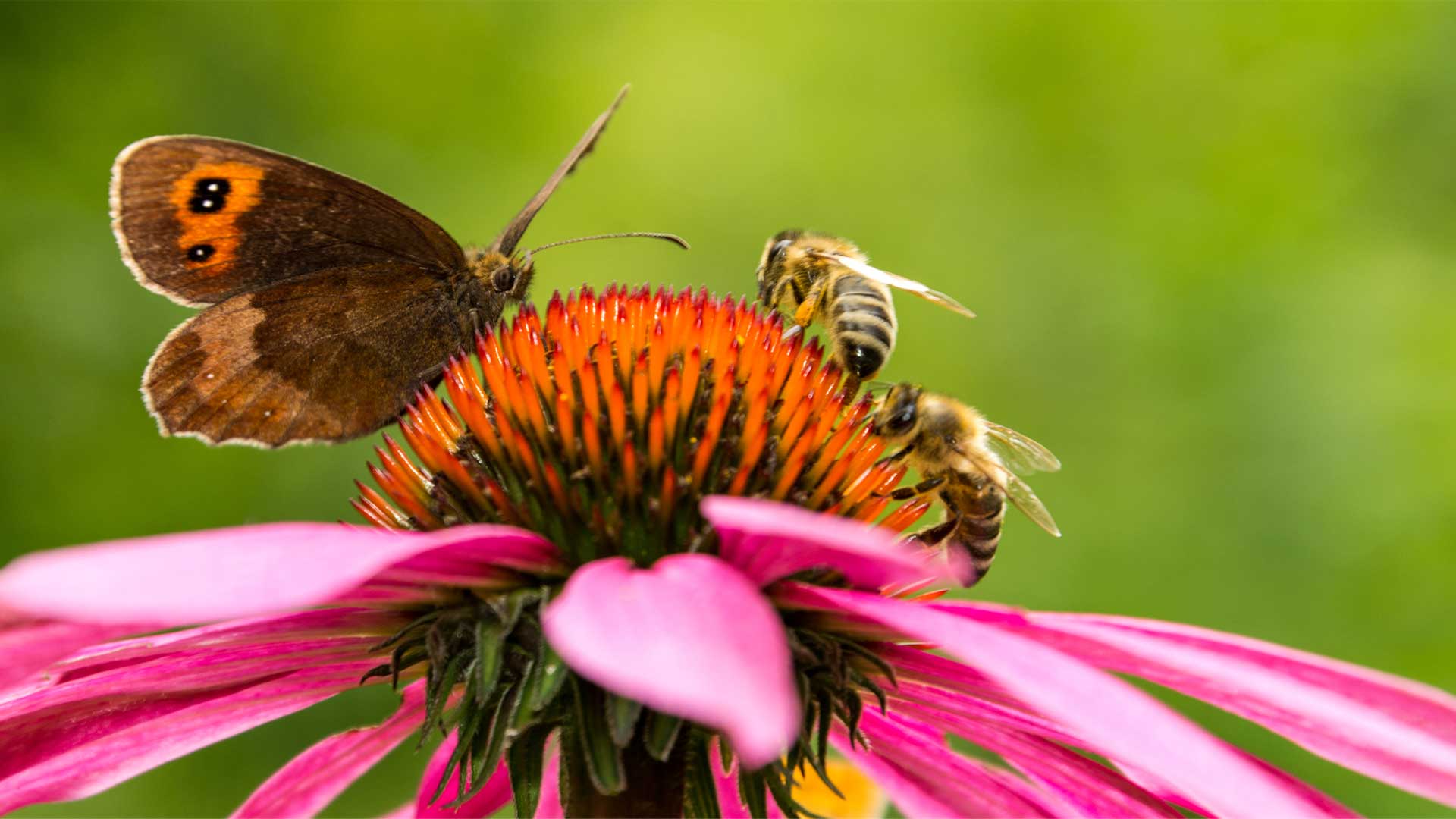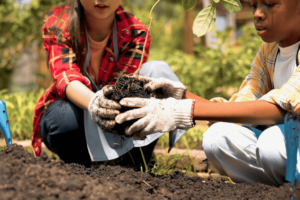Bees, horseflies, hoverflies, wasps and butterflies all have one thing in common : they’re all pollinating insects. By foraging from flower to flower, these insects carry pollen from one plant to the other, ensuring their reproduction and the survival of many vegetal species. Without these natural pollinators, some crops would be very vulnerable and could also completely disappear, thus leaving many populations vulnerable. Many fruits and vegetables exist thanks to pollinators; they’re extremely valuable to our ecosystems. For years, insect populations have been declining worldwide. Several factors are to blame, including loss of natural habitats, deforestation and pesticide use. Small, simple gestures can help improve the lot of pollinators. Here are a few things you can do in your garden to protect them.
Planning successive blooms
Consider creating gardens with a succession of blooms, from early spring to late autumn, so that pollinators can feed throughout the season. These include spring flowering bulbs, blooming as soon as the snow melts, and trees such as maples and caraganas, blooming almost unnoticed, but very much in evidence in early spring. Some perennials and annuals bloom right up to the first frost: echinaceas, rudbeckies and geraniums, to name a few. Design your flower beds according to the species time of blooming, it will not only be beautiful throughout the season, but also much appreciated by the pollinators that will find refuge in your garden.
Plant melliferous species
Some plants are melliferous or nectariferous, i.e rich in nectar and pollen, and thus very attractive to the insects that feed from them. By including them in your garden, you will be able to observe many insects during the summer. Pollinators apparently cannot see the colour red. So, you need white, yellow, pink and violet flowers to attract them. Here’s a few plants to consider:
- New-England Aster
- Agastache Fennel
- Milkweed
- Fistula monarda
- Spiky rudbeckia
Our garden center advisors can help you identify species to choose if you want to create a pollinator-friendly garden.
Limit pesticide use
Many pesticides have impacts on fauna and flora, not targeted by the product. Use them only as a last resort, and opt for alternative solutions that will cause no harm to pollinators. Read the labels and always follow directions when applying a control product.
These are a few simple but effective ways of making green spaces and flower pollinators-friendly. You can also join the growing movement in Quebec to delay lawn mowing in May to give pollinators time to feed on dandelion pollen. It’s another way of doing your part to protect these precious allies to our gardens, but also to our food.






